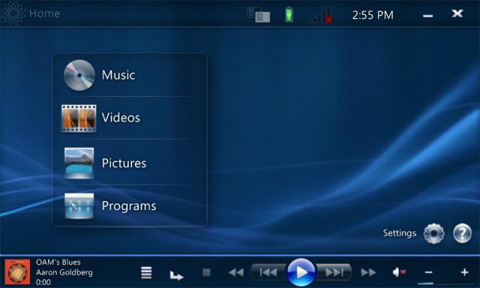With the consumer release of Windows Vista, Microsoft has introduced several new versions of their flagship operating system, including a new release for Origami devices. The new OS version is essentially a stripped-down version of Vista with a user interface designed specifically for Origami handhelds.
Microsoft's Origami project was originally a top-secret device from the labs in Fort Redmond which wound up being known by the more pedestrian moniker of the "Ultra-mobile PC" (UMPC). The UMPC turned out to be a specification for a small tablet computer with a touch-sensitive screen that also acted as a keyboard. Samsung shipped the first model, the Q1, in April of last year, and other manufacturers followed suit.
The new OS upgrade gives these devices a Vista look and feel. However, Microsoft is offering more than just a cosmetic enhancement. A new program launcher, which we previewed earlier this month, turns the UMPC from just a tiny Windows box into a decent media browser and player. Much like Windows Media Center, whose interface it closely resembles, the Origami Experience works as a replacement for the standard Windows Explorer shell. It allows the user to quickly browse through music, videos, and photos, while keeping track of things such as the time, battery life, and WiFi connectivity.

The main Origami Experience screen.
Will the Origami Experience help drive sales of UMPCs? The main criticisms of
these devices have been their high cost and poor battery life, neither of which
will be ameliorated by the new user interface. However, what the new UI does is
change the experience of a UMPC from being a tiny Windows laptop without a
keyboard to being a fancy new media player gadget that also happens to
run Windows programs. Microsoft is hoping that, like Media Center before it, the
new OS upgrade will help put Windows in places it has never been before. To
date, the hardware combination and resultant price have really dampened
enthusiasm for this form factor, and this is the major hurdle that UMPC
manufacturers have to work on in order for Origami to be a success.
reader comments